Big congrats. Lilian has successfully passed the progress review with outstanding marks.
Please join to watch her seminar.
Big congrats. Lilian has successfully passed the progress review with outstanding marks.
Please join to watch her seminar.
This research is to integrate communication, traffic and driver behaviours, vehicle dynamics, and environment conditions in a unison framework to increase safety, reliability, and performance of connected and automated vehicles within a mix traffic condition.
To achieve this goal, TUPA has been developing an architecture that leverages existing tools like VISSIM, Driving simulator, Virtual Reality and Python to analyze and simulate multiple aspects of traffic including vehicles and pedestrians. This tool will enable to develop and validate techniques to improve traffic congestion, safety, and network performance.
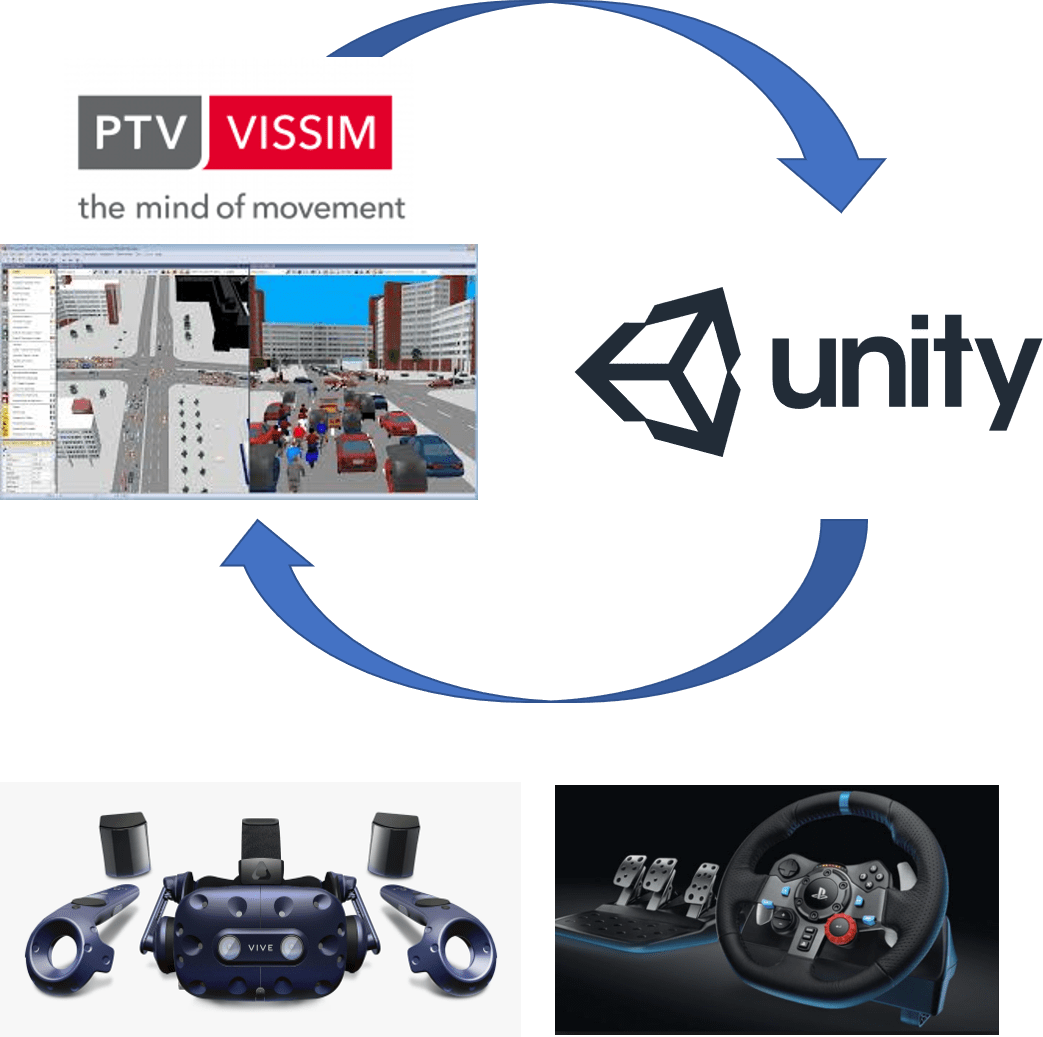
In designing scenarios for the integration of Vissim and Driving simulator, a robust algorithm has been successfully implemented in the platform. This algorithm adapts its behaviour (traffic flow in transport) autonomously in response to the variation of network conditions.
Having human in the loop setting, alternative route guidance information will be displayed in driving simulator so that driver’s decision if he or she is willing to change the route based on the information will be recorded. In this process, the subject vehicle in the simulator and surrounding traffic in VISSIM will interact each other. In addition, all recoded outcomes from the driving simulator will be input to traffic simulation for the large network evaluation. The developed traffic simulation will identify typical traffic indicators such as delay and extreme delay, queue and the number of stops based on the scenarios developed in the driving simulator.
This research keeps developing with the KAIST team since middle of 2019. Transportation experts are aware that it is urgent to take measures to cope with mixed traffic between autonomous vehicles and conventional vehicles, which will be indispensable in the future. It is expected that this new traffic flow not only directly and indirectly leads to traffic accidents but also has a serious side effect on traffic efficiency. Until a fully autonomous vehicle occupies the road, new traffic control techniques are needed. In this study, we propose a new traffic signal controller that supports autonomous driving by driving the driver safely through the virtual environment. This study is expected to be synergistic effect of performance evaluation for future traffic in conjunction with the Connected ITS project and the K-City autonomous vehicle test bed currently underway in Korea. It is expected that many universities and research institutes will benefit from this research since Korea has not developed a human participatory machine learning platform using virtual reality or is in the very early stage.
I am pleased that TUPA has made good outcomes at the 99th TRB conference.
Congratulation on Bo’s confirmation. All the panels and the chair impressed Bo’s research progress. The presentation was also very comprehensive. If anyone needs the seminar in a video file please contact me. Well done Bo!!
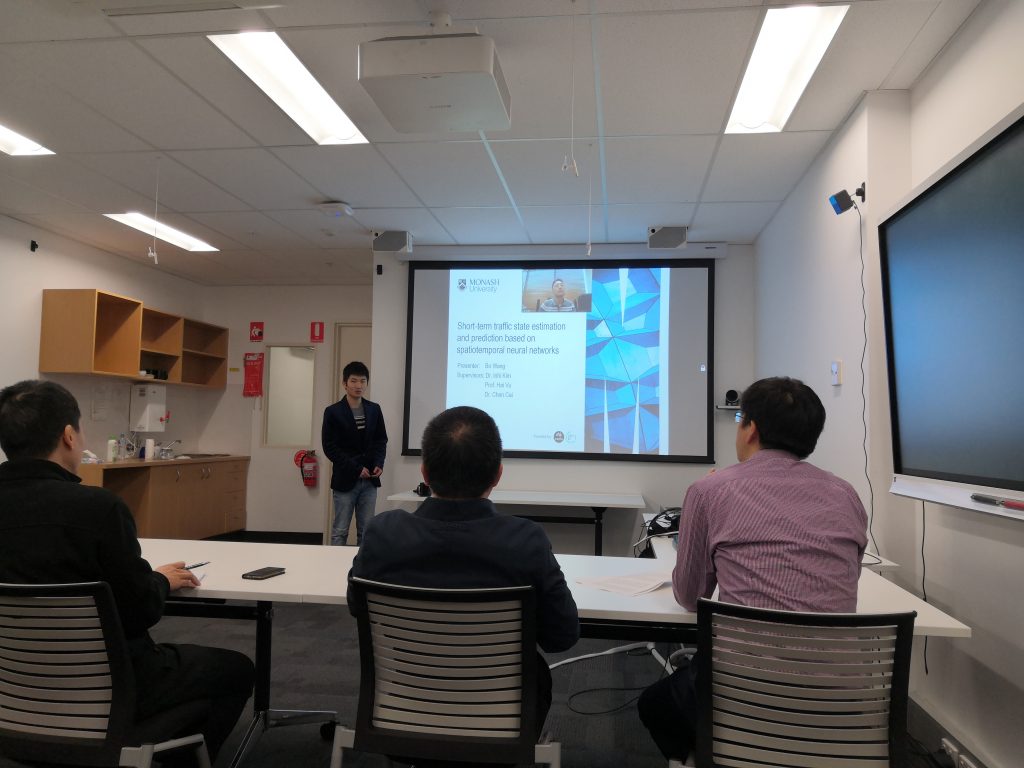
|
Title: Short-term traffic state estimation and prediction based on spatiotemporal neural networks Research Theme: Monitoring, Prediction and Protection Group: Transport Summary: Spatiotemporal neural networks (NN) models have recently achieved competitive results for short-term traffic prediction and achieved outstanding outcomes. However, two problems still require further study in terms of model performance and inner mechanism understanding: (1). The forecasting model affected by many aspects like model inputs, model structure, external factors, and optimisation function. How to design an appropriate framework for short-term traffic state prediction? (2). The existing related studies mainly use the knowledge and advantage from the neural network field, but how to incorporate transport domain knowledge with the above framework? Therefore, th e aims of this study are: (1) Presenting an overall framework from data management to model training for traffic network state estimation and prediction, which provides better forecasting results and APIs for other applications. (2) Understanding the relations of components inside the framework and improving it by integrating transport domain knowledge. The preliminary works of this study focus on the inputs and structure of NN-based model, which used the datasets of bike-sharing traffic network (New York and Suzhou cities) and highway traffic network (PeMS – Caltrans Performance Measurement System). The main outcomes are (1). The impact and inner relation of the external factors (discrete variables like weather, POI, and holidays) are studied. (2). A more accurate forecasting model based on 3D residual NN is presented, which learning the spatial-temporal features and being trained with traffic correlated input data with temporal autocorrelation. (3). The advantage of model fine-tun ing (a technique of transfer learning in the NN field) is studied with PeMS dataset, which has improved the model with limited training data. In the future work, more complex input and output data (network level) will be considered. Since traffic flow, density, and speed are essential factors in traffic flow theory; therefore, further studies will aim to integrate more domain knowledge to guide the model training. Transportation is fundamental to a thriving society. The results of short-term traffic forecasting affect both decision support of city planning and traffic management. The outcomes of this study provide a general framework of the NN-based traffic forecasting model for practice and a better understanding, which will benefit the short-term traffic forecasting related research and industry.
Bio: Bo Wang received the double M.S degree in transportation engineering from Monash University and Southeast University in 2018. He commenced his PhD at Monash University in 2018 under the supervision of Dr. Inhi Kim, Prof. Hai Vu and Dr. Chen Cai. His research interests include intelligent transport systems, deep neural networks and big data mining in transportation. |
I am pleased to inform you that my phd student, Tianqi Gu won the best phd research award from the 1st Joint Workshop held in Xian-Liverpool University, Suzhou. Also our phd candidates (Taeho and Dong) made a wonderful presentation today.
Dr. Mike Ma gave an invited talk to the audience about smart operation of public transportation.



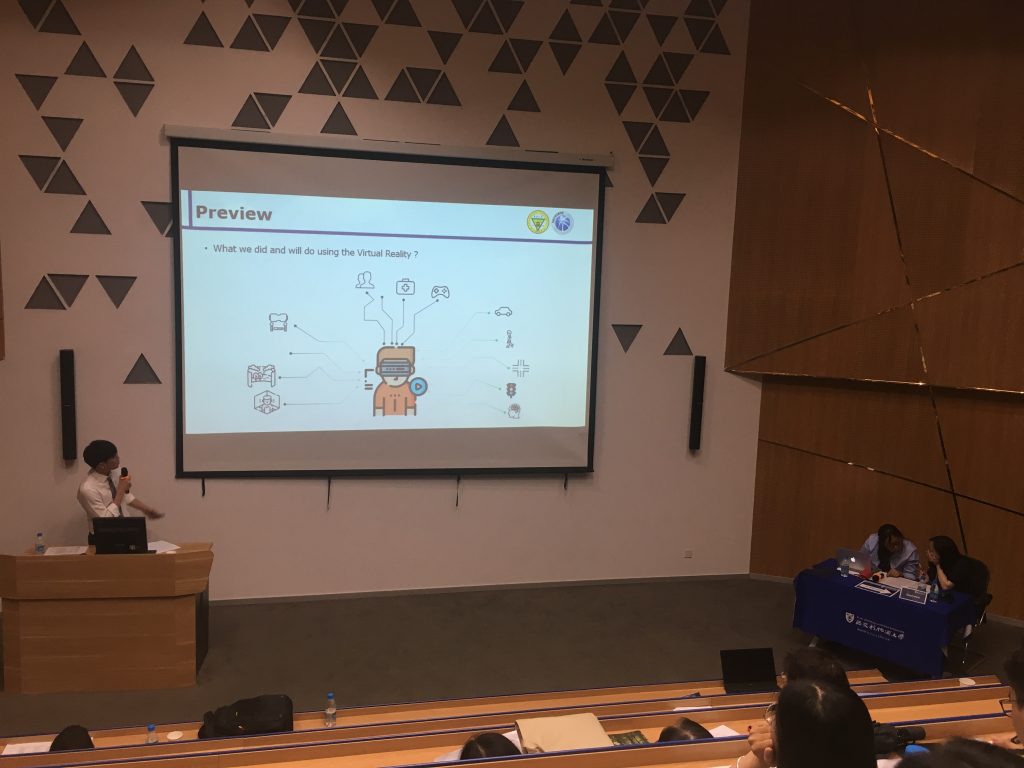
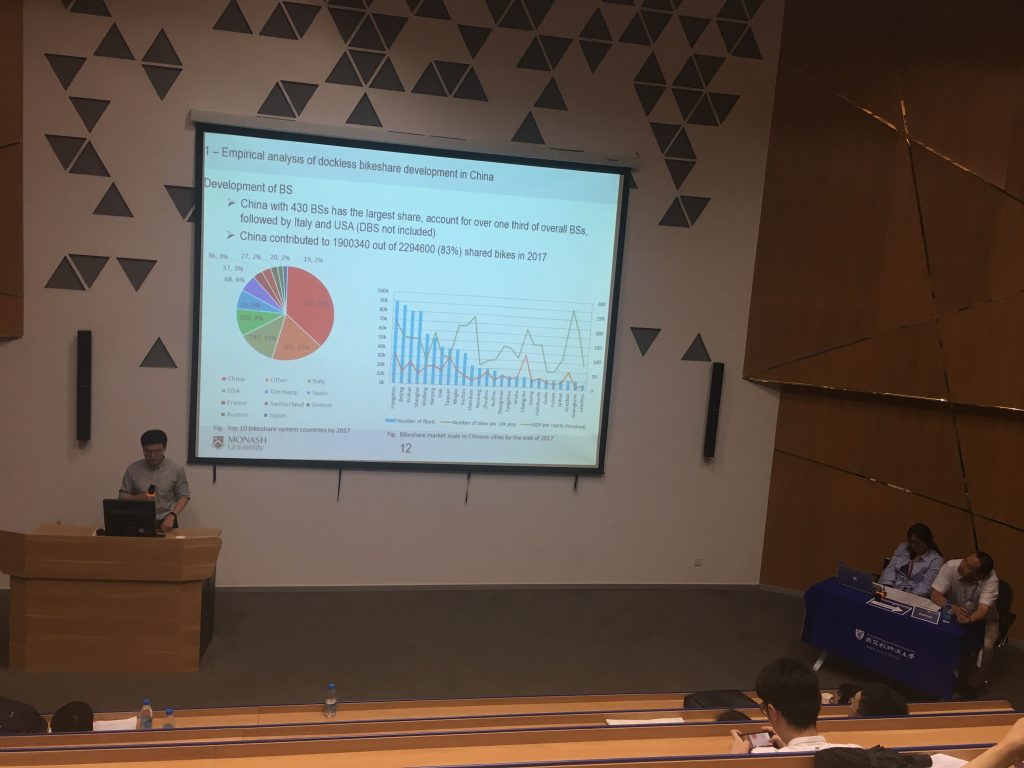
Local universities including, Liverpool University, Southeast university, Nanjing university, Tonji university and Monash university invites to the 1st workshop for sustainable construction in civil engineering on 6th June 2019.
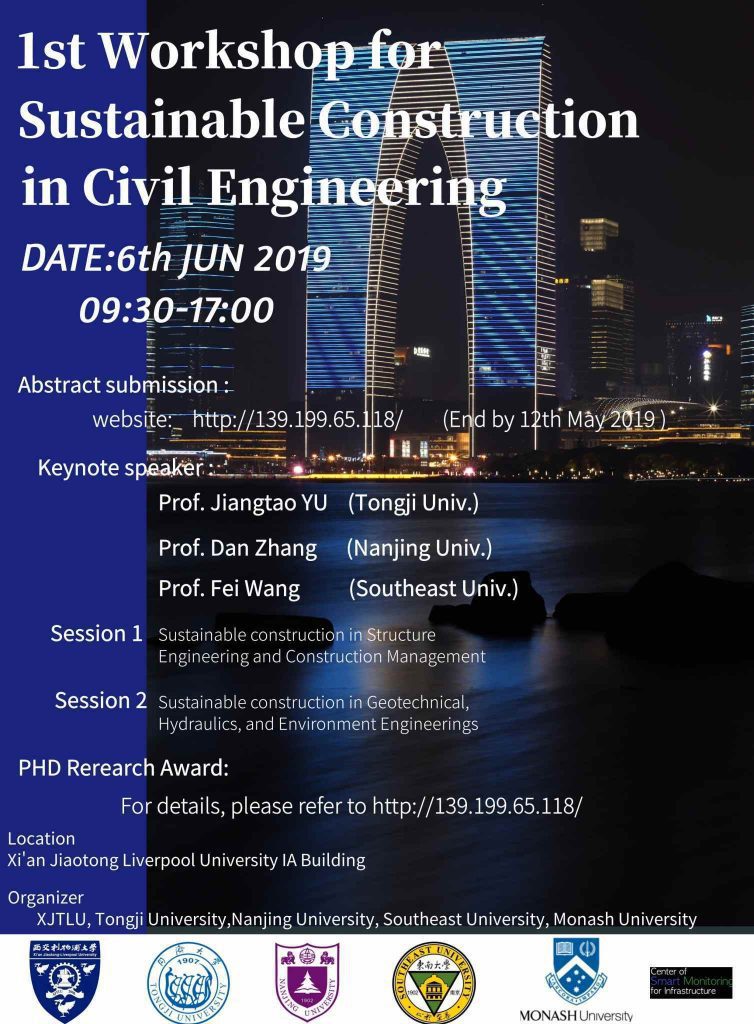
The dashboard below was developed through Elastic open source software using the Seoul metro passenger flow data in 2014.
Data visualization has been important in democratizing data and analytics and making data-driven insights available to workers throughout an organization. Data visualization also plays an important role in big data and advanced analytics projects. As a transportation field accumulated massive troves of data during the early years of the big data trend, they needed a way to quickly and easily get an overview of their data. Visualization tools were a natural fit.
Visualization is central to advanced analytics for similar reasons. When advanced predictive analytics or machine learning algorithms are available, it becomes important to visualize the outputs to monitor results and ensure that models are performing as intended. This is because visualizations of complex algorithms are generally easier to interpret than numerical outputs.
In TUPA, we utilized one of the strongest searching engines called Elasticsearch to make this visualization works. The flowchart below shows the process to deal with big data and visualize it.

For more detailed information please contact our TUPA members below;
Xu Yanping, [email protected]
Cheng Lyu, [email protected]
We utilized TurtleBot3 which adopts ROBOTIS smart actuator Dynamixel for driving.
TurtleBot3 is a ROS-based mobile robot. We customized it to reconstruct the mechanical parts and use optional parts such as the computer and sensor. SLAM, Navigation and Manipulation, makes it to build a map and can drive around the room. Also, it can be controlled remotely from a laptop, joypad or Android-based smart phone.
The project allows the robot to detect the lane(s) and obstacles to avoid. Various algorithms such as SLAM, CNN, LSTM and OpenManipulator are embedded in the robot to make better robot behavior.
The following video demonstrates the navigation function.
For more detailed information please contact our TUPA members below;
Taeho Oh, [email protected]
Xu Bicheng, [email protected]
© 2025 TUPA. All rights reserved.